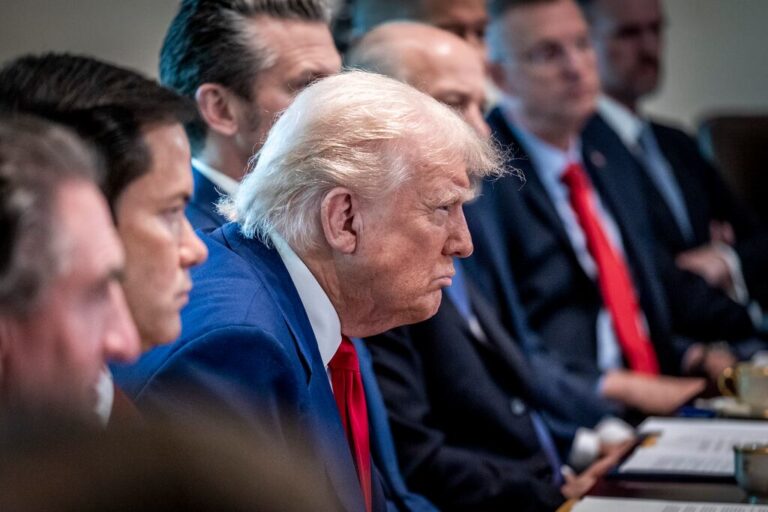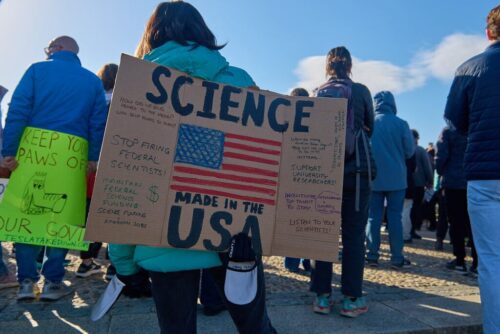This column is from Trendlines, my business newsletter that covers the forces shaping the economy in Boston and beyond. If you’d like to receive it via email on Mondays and Thursdays, sign up here.
“Bah, humbug!”
Warm weather has barely arrived, but President Trump is sounding more like the Grinch than the staunch defender of Christmas that he’s been in the past.
Here’s the president talking on Wednesday about whether he’s negotiating with China’s leader to de-escalate the tariff war — a standoff that threatens to make many Chinese products too expensive to sell in the United States:
“It’ll happen,” he said. Then, in one of his trademark asides: “Somebody said, ‘Oh, the shelves are going to be open.’ Well, maybe the children will have two dolls instead of 30 dolls, you know? And maybe the two dolls will cost a couple of bucks more than they would normally.”
It was an uncharacteristic swipe at kiddie consumerism — and a shrug at potential holiday shortages. It sounds unreal — the president of the richest country shrugging off empty store shelves. But the risk is very real.
“We have a frozen supply chain that is putting Christmas at risk,” Greg Ahearn, chief executive of the Toy Association, a US industry group representing 900 companies, told The New York Times.
China produces nearly 80 percent of all toys and 90 percent of Christmas goods sold in America, according to the Times. Those imports are being hit with tariffs of up to 145 percent.
And it’s not just toys that could be in short supply. Shoes and apparel, furniture, auto parts, hardware products, and smartphones top the list of US imports from China.
“While the level and application of tariffs on China across products is still in flux, it is quite possible that we will see serious product shortages,” said Boston College economist Brian Bethune.
Still, it’s too soon to write off Christmas, or Halloween (the China-dependent costume industry is warning of scary price spikes), or even July Fourth (China is the largest producer of fireworks).
“So much can still happen on the trade front and we anticipate a partial roll back of tariffs in the coming months,” said Gregory Daco, chief economist at consulting firm EY-Parthenon.
“We’re going to see supply disruptions for sure. The question is really what happens with tariffs in the coming weeks as there currently is an inventory buffer to prevent shortages.”
New data show just how much companies rushed to stock up.
Imports surged 40 percent in the first three months of the year, the Commerce Department reported on Wednesday.
The increase, the biggest since the economy was reopening from the pandemic in the third quarter of 2020, was fueled by “frontloading” — businesses buying up imported goods before new tariffs kicked in.
The gap between imports and exports cut a record 5 percentage points from gross domestic product, leaving the economy 0.3 percent smaller in the first quarter than in the final three months of 2024. (Imports subtract from GDP because they represent spending on goods made elsewhere.)
While it was the first drop in quarterly GDP in three years, a recession isn’t a foregone conclusion.
The tariff shock could prove temporary. A separate measure of economic health — called real final sales to private domestic purchasers — rose a solid 3 percent in the quarter.
Trump trade adviser Peter Navarro told CNBC that the GDP report was “the best negative print I have ever seen in my life.” Trump blamed Joe Biden.
But there’s good reason to be nervous.
Frontloading sets the stage for a sharp falloff in purchases down the road, Daco, the EY-Parthenon economist, said in a note. That will be a “far more troubling phase of the ongoing economic slowdown,” he said.
Trump’s tariff wall is unraveling a post-World War II trading system built on cheap imports.
Trump says his trade policy will revitalize US manufacturing, create good—paying factory jobs, and generate revenues that can be used to lower taxes. He’s warned of initial disruption but insists the country will be better off in the long run.
But most economists — and a growing number of business leaders — disagree. Consumer confidence has plunged.
Forecasters put almost even odds on a recession — typically defined as two consecutive quarters of negative growth — in the next year. That‘s up from a benign 20 percent when Trump took the oath of office in January.
What‘s next?
A monthly jobs survey released Wednesday by ADP showed a downshift in private sector hiring in April. The Labor Department‘s more comprehensive report is due out on Friday, and the consensus among forecasters is that employment growth will slow but remain positive.
But there’s no denying the outlook has darkened.
Recession or not, too much winning isn’t likely to be our big problem this year.
Material from prior Globe coverage was used in this report.
Memo to the C-suite: You could join Harvard on Trump’s hit listCould Trump’s trade war be his ‘Nixon shock’ moment?US economy shrinks 0.3 percent in first quarter as Trump trade wars disrupt businesses




Comment count: